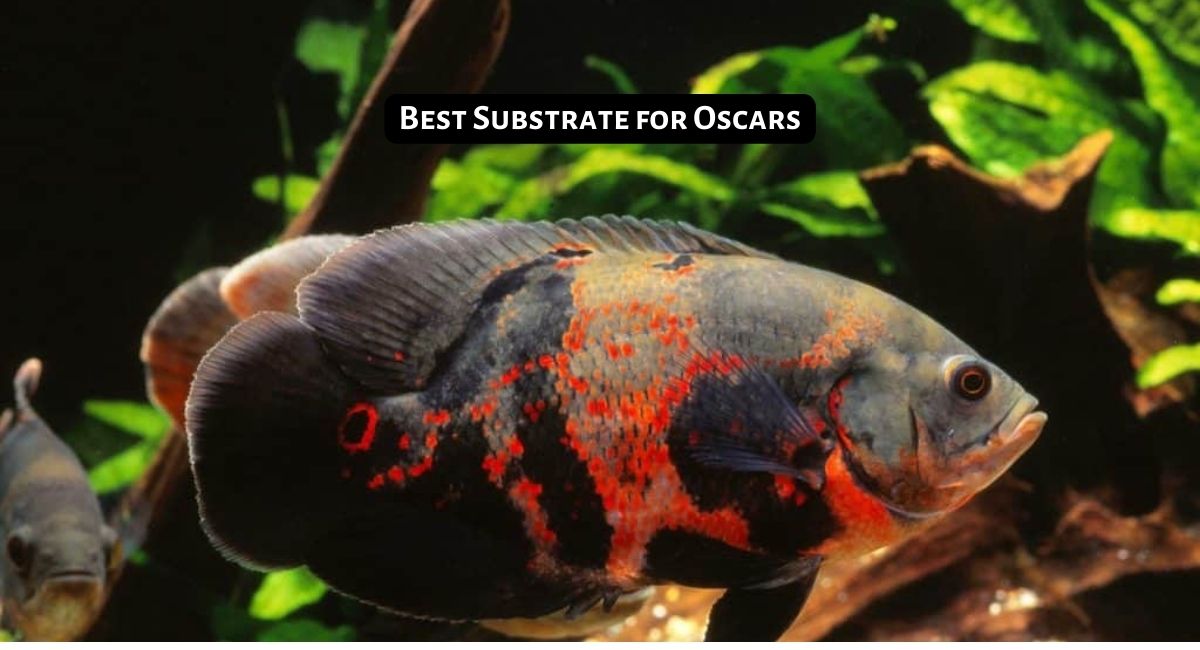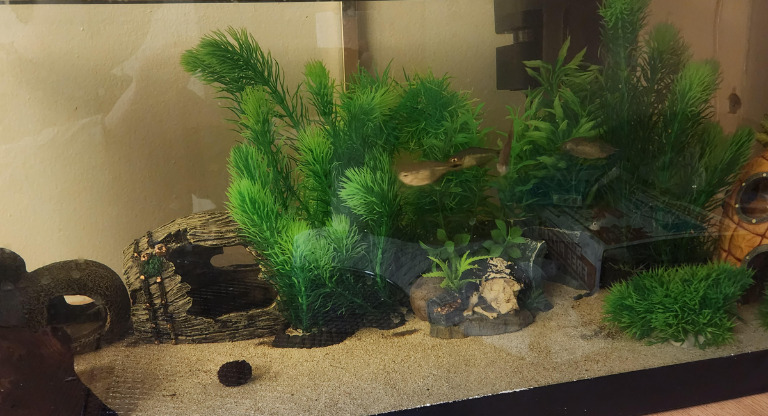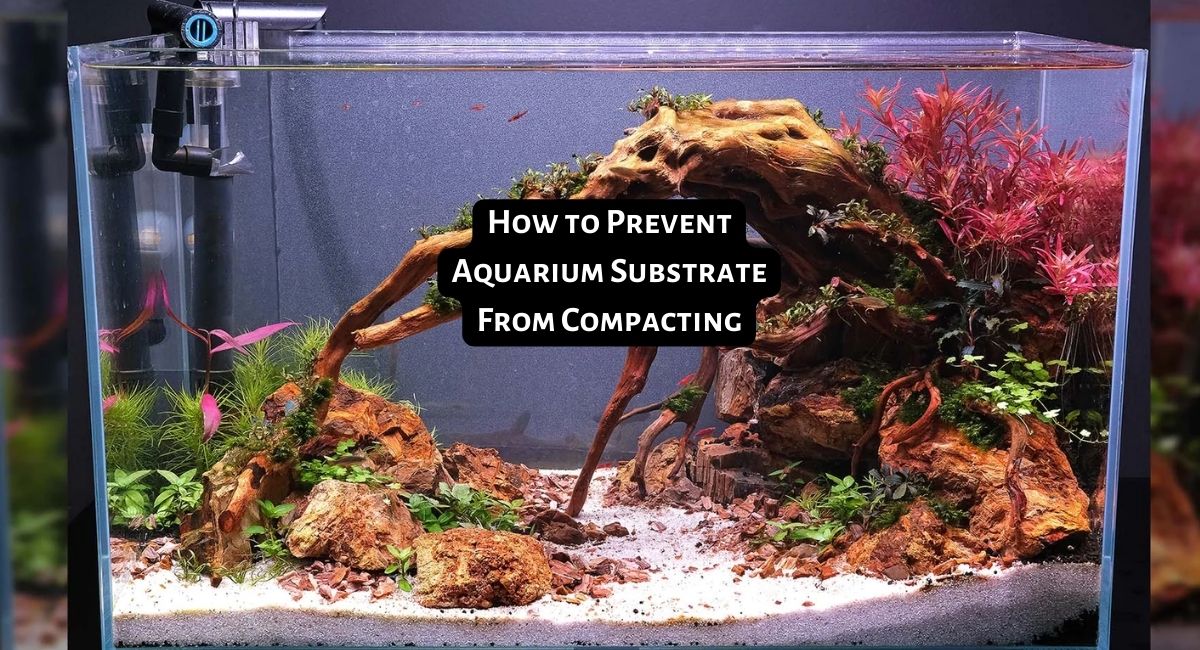Smartplantedaquarium.com participates in affiliate marketing programs. We may earn commissions on purchases made through our affiliate links. This doesn't affect our content or recommendations and we only recommend products we would put in our own tanks.
In this article, we will discuss everything you need to know about selecting the best substrate for Oscars, including the different types of substrates available, their benefits and drawbacks, and how to maintain them for optimal fish health.
Choosing the best substrate for your aquarium is crucial to the health and happiness of your fish. When it comes to Oscar fish, selecting the right substrate is especially important, as they require a soft and gentle surface to protect their delicate underbellies.
Oscars are one of the most popular freshwater fish among aquarium enthusiasts due to their vibrant colors, playful personalities, and unique appearance. However, their specific care requirements mean that choosing the best substrate for Oscars is essential to their well-being.
By the end of this article, you will have a clear understanding of the best substrate for Oscars and how to create the perfect aquarium environment for these fascinating fish.
Contents
Key Takeaways
- Selecting the best substrate for Oscars is crucial for their health and well-being.
- Oscars can thrive in a bare-bottom tank, but adding substrate can enhance their environment.
- Substrate mimics their natural habitat, provides behavioral stimulation, aids in biofiltration, and enhances the tank’s visual appeal.
- The best substrate options for Oscars include sand, large river rocks, gravel, and bare-bottom.
- Sand is a natural choice that mimics their native environment and allows for digging and sifting behavior.
- Large river rocks offer stability and a natural aesthetic, but may hinder digging behavior.
- Gravel comes in various colors and sizes, allowing for customization, but be cautious of size to prevent ingestion.
- A bare-bottom tank is easy to maintain but lacks the natural look and misses out on natural digging behavior.
- Avoid sharp or jagged substrates, chemically treated or unsafe materials, small loose particles, metallic substrates, excessive organic matter, unwashed substrates, substrates with unpredictable pH effects, substrates with large particles, unsterilized substrates, and unsuitable colored substrates for Oscars.
- Consider factors such as size and texture, smoothness, natural appearance, plant compatibility, cleaning and maintenance, water quality, behavioral needs, color choice, depth, budget, safety, and tank size when choosing substrate.
- Oscars prefer a tank with ample space, hiding places, and room for swimming and activity.
- Provide tank decorations like driftwood and rocks, but ensure they are securely placed to avoid injury.
- Maintain stable water parameters with suitable temperature, pH, and water quality.
- Oscars enjoy a varied diet of high-quality pellets, live or frozen foods, and occasional vegetables.
- Regular water changes and proper filtration are essential for the health of Oscars.
- Monitor water parameters and observe the behavior and appearance of Oscars to ensure they are thriving in their tank.
Do Oscars Need Substrate
Oscars, the popular freshwater fish often kept in aquariums, don’t strictly require substrate, but having a suitable substrate can enhance their environment. Substrate refers to the material covering the bottom of the aquarium. While Oscars can thrive in a bare-bottom tank, adding substrate can offer benefits.
Here’s why:
- Natural Environment: Oscars originate from river habitats with sandy or gravelly bottoms. Providing a similar substrate in their tank can mimic their natural environment and help them feel more at ease.
- Behavioral Stimulation: Substrate allows Oscars to exhibit natural behaviors like sifting through the material, digging, and sifting for food. It provides mental and physical stimulation.
- Biofiltration: Beneficial bacteria grow on the substrate, contributing to the aquarium’s biological filtration. This helps in breaking down waste and maintaining water quality.
- Plant Growth: If you plan to include live plants, a substrate can anchor the plants and provide them with nutrients.
- Aesthetic Appeal: Substrate can enhance the tank’s visual appeal, creating a more natural and pleasing environment.
Best Substrate for Oscars
Selecting the best substrate for Oscars in your fish tank is a crucial decision when setting up their aquarium. The substrate not only affects the aesthetics of the tank but also plays a significant role in the overall well-being of your Oscar fish. Let’s delve deeper into the various substrate options for Oscars, considering their advantages and considerations:
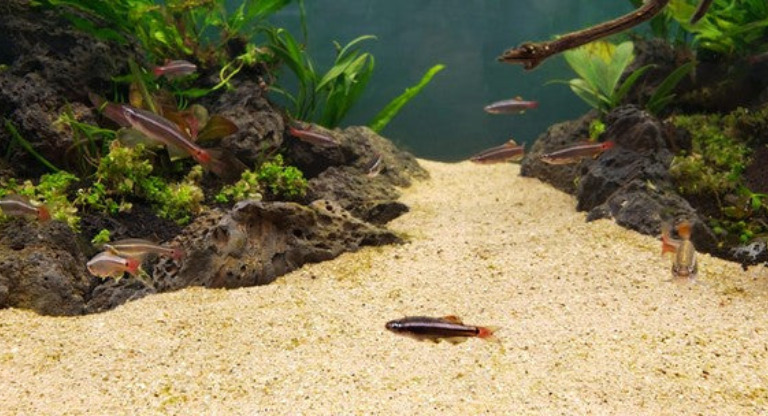
Sand
Sand is an excellent choice for oscar fish substrate due to its natural appearance and soft texture. It mimics the fish’s native environment, providing an authentic look to the tank. Oscars enjoy digging and sifting through the substrate, and sand allows them to do so safely. Moreover, sand can house beneficial bacteria, aiding in waste breakdown, and contributing to better water quality. However, regular cleaning is necessary to prevent debris buildup.
Advantages:
- Natural Look: Sand replicates the natural riverbeds and bottoms that Oscar fish inhabit in the wild, providing a visually authentic environment.
- Safety: Oscars love to sift through and dig into the substrate. Sand is soft and won’t harm their sensitive barbels or fins.
- Beneficial Bacteria: Sand can host beneficial bacteria, aiding in the biological filtration process by breaking down waste and maintaining water quality.
Disadvantages:
- Maintenance: Regular cleaning is essential to prevent waste from settling at the bottom. Sand can trap debris and leftover food, leading to water quality issues if not properly maintained.
Considerations:
- Maintenance: Sand can trap debris and leftover food, so regular cleaning and siphoning are necessary to prevent the accumulation of detritus and maintain water quality.
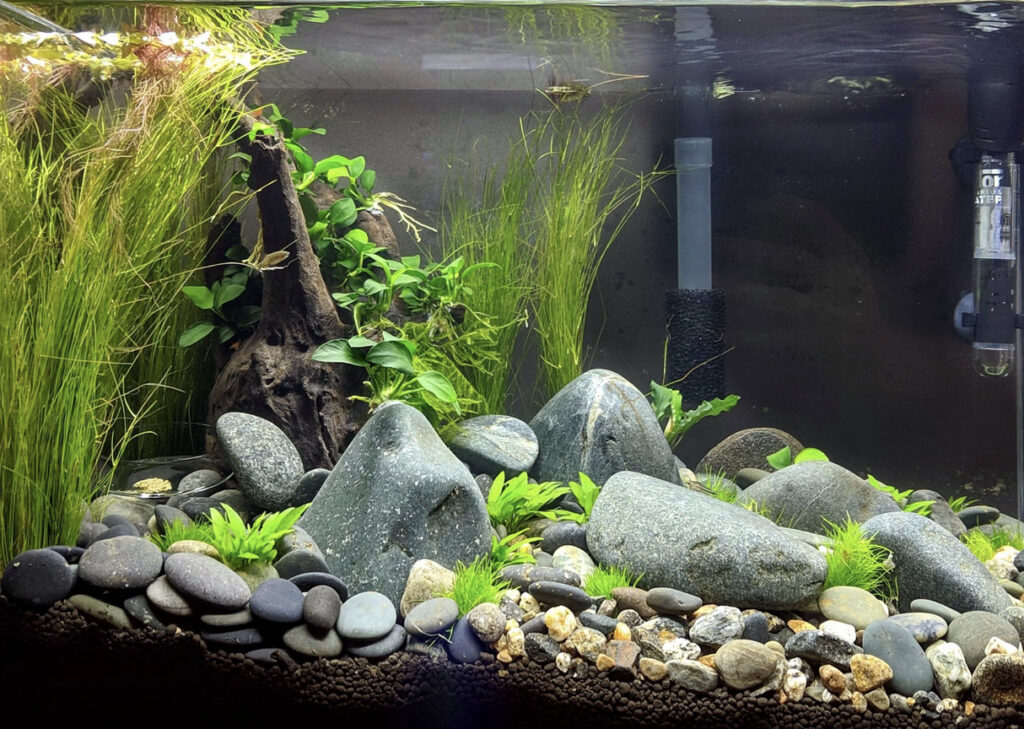
Large River Rocks
Large river rocks offer stability and a rugged, natural aesthetic to your Oscar’s tank. They’re particularly useful for securing tank decorations and live plants. However, Oscars’ digging behavior may be hindered by these rocks, potentially leading to frustration or stress in the fish.
Advantages:
- Stability: Large river rocks can provide stability in the tank, particularly when positioning decorations, driftwood, or live plants.
- Aesthetic Appeal: They offer a rugged and natural appearance that can be visually pleasing.
Disadvantages:
- Digging Behavior: Oscars enjoy digging in the substrate, and large river rocks may hinder this natural behavior, potentially causing frustration or stress in the fish.
Considerations:
- Digging Behavior: Oscars are known for their digging behavior, and large river rocks may hinder this natural activity. This could lead to frustration or stress in your fish.
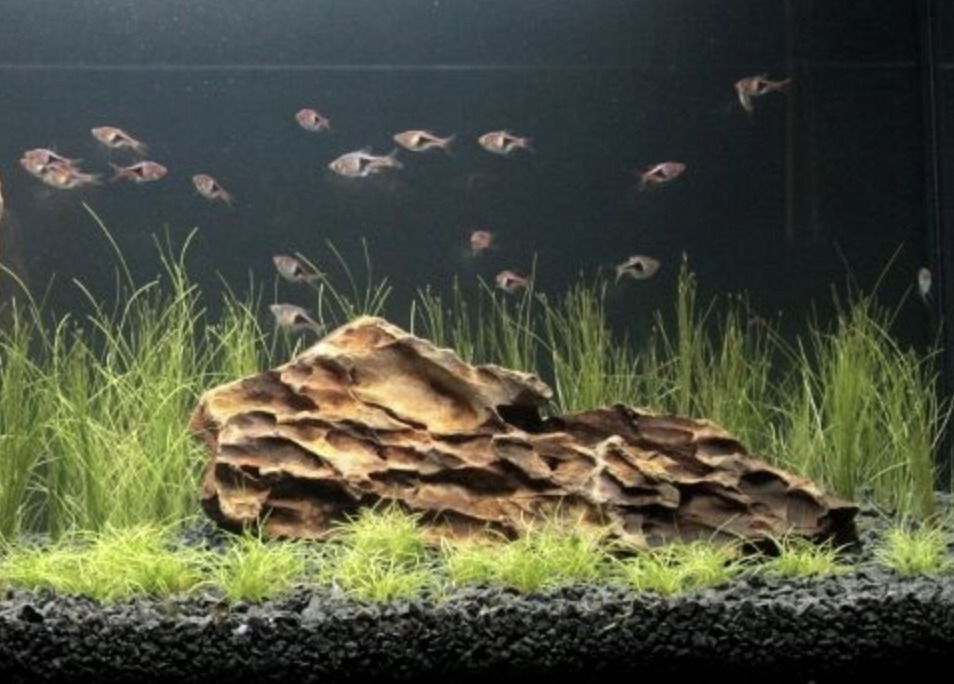
Gravel
Gravel comes in various colors and sizes, allowing for customization in your tank’s design. Like sand, it can also host beneficial bacteria, aiding in biological filtration. However, it’s crucial to ensure that the gravel pieces are large enough to prevent Oscars from swallowing them, which could be harmful. Regular cleaning is necessary to maintain water quality.
Advantages:
- Variety: Gravel comes in various colors and sizes, allowing you to customize the tank’s appearance to your liking.
- Beneficial Bacteria: Like sand, gravel can host beneficial bacteria, contributing to the biological filtration process.
Disadvantages:
- Size Concerns: Ensure the gravel pieces are large enough so that the Oscar cannot swallow them, as ingestion of small gravel can lead to health issues.
- Maintenance: Regular cleaning is required to remove trapped debris between gravel pieces and prevent water quality problems.
Considerations:
- Size: Ensure that the gravel pieces are sufficiently large to prevent Oscars from swallowing them, which could lead to health issues.
- Maintenance: Regular cleaning is necessary to prevent debris from accumulating between gravel pieces and affecting water quality.

Bare Bottom
A bare-bottom tank is easy to maintain and keeps waste and uneaten food visible for prompt removal, promoting good hygiene and water quality. However, it lacks the natural look that other substrates offer, which may not be visually appealing to some aquarists. Oscars may also miss out on their natural digging behavior in a bare-bottom setup.
Advantages:
- Easy Maintenance: Tanks without substrate are easy to clean and maintain. Waste and uneaten food are easily visible and can be promptly removed.
- Hygiene: The absence of substrate reduces the risk of trapped waste and uneaten food, promoting better water quality.
Disadvantages:
- Aesthetics: Lacks the natural look that other substrates offer, which may not be visually appealing to some aquarium enthusiasts.
- Digging Behavior: Oscars might miss the digging behavior they exhibit in substrated tanks, which can be a source of mental stimulation for them.
Considerations:
- Aesthetics: Bare-bottom tanks lack the natural look that substrates offer, which may not be visually appealing to some aquarium enthusiasts.
- Digging Behavior: Oscars may miss the opportunity to engage in their natural digging and sifting behaviors, which can be an essential source of mental stimulation for them.
Substrates to Avoid for Oscars
While selecting the best substrate for Oscars, it’s important to avoid certain substrates that could pose risks to their health and well-being. Here’s a list of substrates you should avoid for Oscars:
Sharp or Jagged Substrates: Avoid substrates with sharp edges, rough textures, or jagged surfaces. These can lead to injuries or abrasions on your Oscars’ delicate skin and underbellies.
Chemically Treated or Unsafe Materials: Stay away from substrates that are chemically treated, painted, or coated. These substances can leach into the water and harm your fish. Choose substrates that are specifically designed for aquarium use.
Small Loose Particles: Substrates made up of very fine, loose particles can lead to issues such as compaction, which can affect water circulation and lead to stagnant areas in the substrate.
Metallic Substrates: Avoid using metallic or metallic-coated substrates as they can introduce harmful elements into the water that are toxic to fish.
Excessive Organic Matter: Substrates with a high organic content, such as soil from your garden, can break down and release excess nutrients, leading to poor water quality and potential algae growth.
Unwashed Substrates: Always rinse substrates thoroughly before adding them to the tank. Substrates that haven’t been properly rinsed can cloud the water and affect water quality.
Substrates with Unpredictable pH Effects: Some substrates can alter the pH of your tank water, which may not be suitable for your Oscars. Avoid substrates that are known to significantly change pH levels unless you are certain they match your fish’s requirements.
Substrates with Large Particles: Substrates with large, coarse particles can make it difficult for your Oscars to sift and dig comfortably. It’s best to choose substrates with sizes that won’t cause discomfort or impaction if ingested.
Unsterilized Substrates: Using substrates that haven’t been properly sterilized can introduce harmful bacteria, parasites, or pathogens into your tank.
Unsuitable Colored Substrates: Substrates with bright or artificial colors might stress your Oscars, as they prefer a more natural and subdued environment.
Factors to Consider When Choosing the Best Substrate for Oscars
When selecting the ideal substrate for your Oscars’ aquarium, it’s important to consider several factors to ensure their well-being and the overall health of the tank. Here are key factors to keep in mind:
- Size and Texture: Oscars are known to sift through substrate and may even move it around. Choose a substrate with a size and texture that won’t cause harm if ingested. Small-sized gravel or sand is usually a safe choice.
- Smoothness: Ensure the substrate is smooth to prevent any injuries to the Oscars’ delicate underbelly. Sharp or rough substrate can lead to abrasions.
- Natural Appearance: Opt for a substrate that resembles the Oscars’ natural habitat, such as sand or fine gravel. This helps them feel more comfortable and provides a familiar environment.
- Plant Compatibility: If you plan to have live plants, choose a substrate that supports plant growth. Plant-friendly substrates contain nutrients that aid in plant development.
- Cleaning and Maintenance: Consider ease of cleaning. Oscars produce a lot of waste, and substrate can trap debris. Choose a substrate that is easy to siphon and clean without disturbing the tank’s ecosystem.
- Water Quality: Some substrates might affect water chemistry. Research if the substrate has any impact on pH, hardness, or other water parameters. Choose one that aligns with the preferences of Oscars.
- Behavioral Needs: Oscars are known to dig and sift through substrate. Opt for a substrate that allows them to exhibit these natural behaviors without causing harm.
- Color Choice: While color is more of an aesthetic consideration, keep in mind that a darker substrate can highlight the Oscars’ colors and make them stand out.
- Depth: Consider the depth of the substrate. For Oscars, a depth of around 2 to 3 inches should suffice. Deeper substrate can create pockets where debris accumulates.
- Budget: Substrates come in a range of prices. Consider your budget and balance it with the needs of your Oscars and the overall setup of the tank.
- Safety: Make sure the substrate is free from any harmful chemicals or contaminants that could harm the Oscars.
- Tank Size: When choosing the best substrate for Oscars, the size of your aquarium can influence the type and amount of substrate you choose. Larger tanks may require more substrate.
What do Oscars Like in Their Tank
Oscar fish, being one of the most popular choices among cichlid enthusiasts, have specific needs and preferences for their habitat to thrive. Here’s a detailed breakdown of what Oscars prefer in their tank and the ideal conditions:
Tank Decor and Setup
- Space: Oscars are known for their rapid growth, reaching sizes of up to 12-14 inches. To accommodate their size and activity level, a minimum tank size of 55 gallons is recommended for a single Oscar. If you plan to keep more Oscars or introduce tank mates, a larger tank, ideally 75 gallons or more, is necessary to prevent territorial aggression.
- Hiding Spots: Oscars occasionally seek shelter and rest. Large pieces of driftwood, caves, or rock formations can provide hiding spots. Ensure there are no sharp edges that could injure the fish.
- Plants: Oscars can be rough on live plants, often uprooting them. If you choose to include plants, opt for hardy species like Java Fern or consider using artificial plants.
- Toys: Oscars are intelligent and curious fish. Some owners introduce floating toys or ping pong balls for them to interact with and push around, simulating playful behavior.
Ideal Tank Conditions
- Water Temperature: Maintain a water temperature in the range of 74°F to 81°F (23°C to 27°C). Oscars are sensitive to temperature fluctuations, so a reliable heater is essential.
- pH Level: Oscars prefer slightly acidic to neutral water. Aim for a pH level between 6.0 to 8.0 to ensure their comfort.
- Water Hardness: Oscars thrive in water that is soft to moderately hard, with a general hardness (dGH) of 5-20.
- Filtration: Oscars produce a significant amount of waste, so a powerful filter is crucial to maintain water quality. An external canister filter is often recommended. Regular water changes of about 10-15% per week can also help keep water conditions optimal.
- Aeration: While Oscars don’t require extremely high levels of oxygen, adequate aeration is beneficial. Consider using an air stone or an additional air pump to ensure sufficient oxygenation.
- Lighting: Oscars aren’t particularly sensitive to lighting, but if you plan to have live plants, standard aquarium lighting is sufficient. Maintain a consistent light-dark cycle to mimic their natural environment.
- Tank Mates: Oscars can be aggressive, especially during breeding and territorial disputes. However, they can coexist with other similarly sized fish, such as other large cichlids, catfish, and large plecos. Always monitor for signs of aggression and ensure compatibility when introducing tank mates.
Conclusion
If you’re thinking of keeping Oscars in your aquarium, you’re in for a treat! These large and lively fish are a sight to behold, but they do require some specific care to keep them healthy and happy. And, when it comes to choosing the best substrate for your Oscars, you want to make sure you get it right!
First off, let’s talk size. Oscars are notorious for being voracious eaters, and that extends to their substrate preferences. Anything too small, and they’ll gobble it up like it’s a tasty treat. But, if the substrate is too large, it can cause all sorts of problems. That’s why I recommend using sand or fine gravel as the best substrate for Oscars.
Why sand or fine gravel, you ask? Well, let me tell you, it’s not just because they’re small enough for Oscars not to swallow. Sand and fine gravel are great for promoting good water circulation and oxygenation. You see, these substrates allow water to flow freely through them, creating a natural filtration system that helps keep your tank clean and your fish healthy.
But, as with any substrate, it’s important to keep it clean and maintained. Oscars are messy eaters and will produce a lot of waste, which can quickly accumulate in the substrate and lead to poor water quality. Regular cleaning and maintenance are crucial to prevent the buildup of waste and toxins, so don’t skimp on this step.
Frequently Asked Questions
1. How long do Oscars live?
Oscars, also known as Astronotus ocellatus, are a species of freshwater fish that are popular among aquarium enthusiasts. In the wild, Oscars typically live for 10 to 15 years. However, in captivity, they can live for even longer if they are provided with a suitable environment and proper care.
2. How many Oscar fish can stay together?
It’s recommended to keep only one Oscar fish per 55 gallons of water. Therefore, the number of Oscar fish that can stay together depends on the size of the tank. For example, a 75-gallon tank could comfortably accommodate two Oscars.
3. Is sand or gravel better for Oscars?
Yes, Both sand and gravel can be suitable substrates for Oscars, and the choice ultimately depends on personal preference. Sand is a popular choice as it resembles the natural habitat of Oscars and is gentle on their delicate skin. Gravel, on the other hand, comes in a range of colors and sizes, allowing for greater flexibility in designing your aquarium. However, it’s important to choose a substrate that is not too sharp or abrasive, as this can damage your fish’s skin.
4. Do Oscar fish need hiding places?
Yes, Oscar fish need hiding places in their tank. Providing hiding places such as plants, rocks, and caves can provide security and shelter for your Oscar fish, reducing their stress levels and promoting healthy behavior. Hiding places also provide a place for your fish to retreat and rest, which is essential for their overall well-being. Additionally, hiding places can help create a more natural environment for your fish and enhance the aesthetic of your aquarium.
5. Do Oscars like plants and decorations?
Yes, Oscars prefer a planted aquarium with lots of hiding spaces and decorations. Plants and decorations provide hiding places and a sense of security to the fish, reducing their stress levels. Live plants also help in maintaining the water quality by absorbing nitrates and other pollutants.
